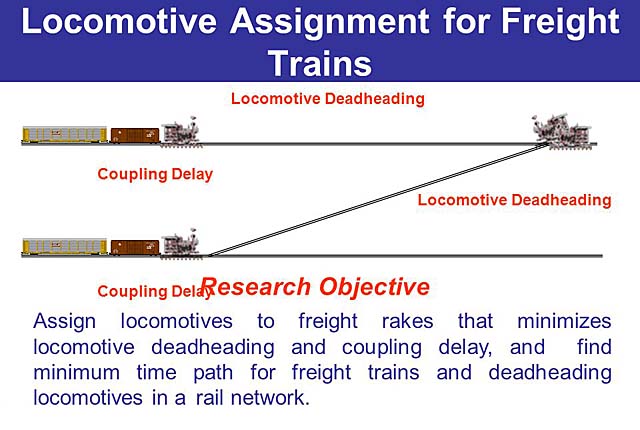
Montreal Quebec - When studying for a doctoral degree (PhD), candidates submit a thesis that provides a critical review of the current state of
knowledge of the thesis subject as well as the student's own contributions to the subject.
The distinguishing criterion of doctoral graduate research is a significant and original contribution to knowledge.
Once accepted, the candidate presents the thesis orally.
This oral exam is open to the public.
Abstract
For the enormous capital investment and high operation expense of locomotives, the locomotive management, assignment, and fuel consumption are two of the most
important areas for railway industry, especially in freight train transportation.
Several research works have been done for the Locomotive Assignment Problem (LAP), including exact mathematics models, approximate dynamic programming, and
heuristics.
These previously published optimization works suffer from either scalability or solution accuracy issues.
In addition, each of the optimization models lacks part of the constraints that are necessary in real-world locomotive operation, e.g., maintenance and shop
constraints, or consist busting avoidance.
Furthermore, there are rarely research works for the reduction of total train energy consumption on the locomotive assignment level.
The thesis is organized around three main contributions.
Firstly we propose a consist travel plan based LAP optimization model, which includes all the required meaningful constraints and which can efficiently be
solved using large scale optimization techniques, namely column generation (CG) decomposition.
Our LAP model uses the number of consist travel plans to evaluate the occurrence of consist busting.
In addition, a new column generation acceleration architecture is developed, that allows the sub problem, i.e., column generator to create multiple columns in
each iteration, with each column being an optimal solution for a reduced sub network.
This new CG architecture greatly reduces the computational time comparing to our original LAP model.
For train fuel consumption, we derive, linearize, and integrate a train fuel consumption model into our LAP model.
To avoid potential train collision by train rescheduling that the new model requires, we establish a conflict-free pre-process to assign each train reasonable
time windows.
The new LAP-fuel consumption model works fine for the optimization of the train energy exhaustion on the locomotive assignment level.
For the optimization models above, the numerical results are conducted on the railway network infrastructure of Canada Pacific Railway (CP), with up to 1,750
trains, and 9 types of locomotives, over a two-week time period in the entire CP railway network.
Where
Room EV 3.309, Engineering, Computer Science and Visual Arts Integrated Complex (1515 Street Catherine West.), Sir George Williams Campus,
Montreal.
Cost
This event is free.
Mary Appezzato.
under the provisions in
Section 29 of the Canadian
Copyright Modernization Act.


